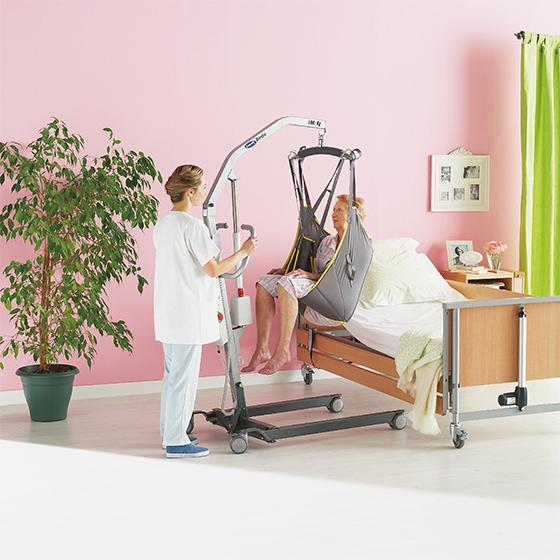
Patient Hoists come in many shapes and sizes; however, their basic design has not changed since they were introduced by Lord Armstrong, the famous British Industrialist in 1845. It would be some time before the basic design we know today would be introduced and used for lifting people as a patient hoist.
When to hoist?
The requirement to hoist someone rather than manually assist usually arises when the person being assisted can offer no help in a transfer. For example: the person being assisted can no longer move from a seated to a standing position, with either a non-mechanised or mechanised stand aid , and cannot maintain a standing position long enough in order to be able to move from one surface to another. It is at this point where we consider hoist use.
How to pick the right patient hoist?
When choosing the right hoist part of our clinical reasoning is the TILE based risk assessment. What manoeuvres are being performed (Task), who is performing the manoeuvre (Individual), how heavy is the person being moved (Load) and how much space do we have/is their clearance for a mobile hoist (environment)? This is a basic example of how we start to choose the right hoist for our clients.
The Birdie patient hoist is an Invacare stalwart, widely used in domestic settings, the base can fit around most domestic seats and it has good clearance from most types of beds. However please remember, the base of any mobile hoist must fit around a seat and under a bed. The length of the base must also be considered as mobile hoists need space to manoeuvre and turn.
The Birdie Evo is designed for plus sized patients, being able to lift up to 32 stone (200kg). However, you must factor in the weight of the person being moved and how many people will be required to move the person in the hoist, also floor surfaces like carpets can increase friction, making the hoist harder to move. Space is also a huge consideration for this piece of equipment as well as clearance around seating.
Although mobile patient hoists provide a versatile and easy to access solution, in some circumstances our TILE risk assessments can rule out their use.
Why is that?
Sometimes there is not enough room to manoeuvre a person in an area using a mobile hoist, or the weight of the person, combined with the weight of the hoist plus environmental factors such as floor surfaces mean that moving the person is too difficult for carers.
This is when a CTH like the Invacare Robin should be considered over a mobile hoist. A CTH does not require floor space to manoeuvre, in the case of the Robin it has a maximum safe working load of 200kg, which is important to know as it also can mitigate against the weight of a person being hoisted, in two ways: by reducing friction, and secondly by having the option of a powered traverse. This could in turn reduce the number of carers needed to support a person and increase patient choice and independence by allowing a relative to more easily carry out hoisting, dependent on your risk assessment.
It is also worth considering that although TILE formulates a risk assessment it does not necessarily support client-centred practice due to its assumption that the load is inanimate. Therefore, TILE must be used in conjunction with reflection on the person’s goals, what activities they engage in, their own strengths and what is meaningful to them.
Picking the right hoist needn’t be rocket science, and there is plenty of choice in the Invacare range and the starting point is always about the users mobility level or physical ability to assist with passive lifters are designed to help the caretaker to move the person from one seated or lying position to another seated or lying position and active lifters to transfer from seated to seated position for the user who has limitations but can sit upright and initiate elevation.
Keep reading
** This post was originally published on https://www.passionatepeople.invacare.eu.com/the-clinical-decisions-behind-recommending-a-patient-hoist/


